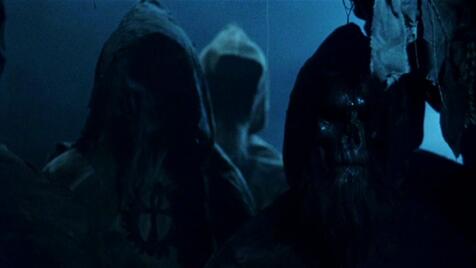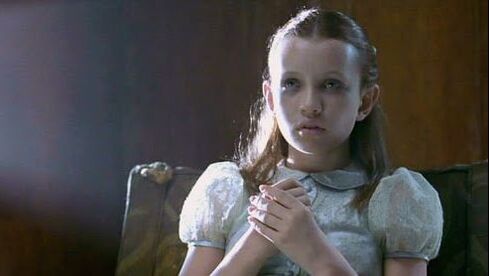 Two young women are sent adrift at sea by businessman Howard Tucker (Jack Taylor), who has arranged for them to be “rescued” as a publicity stunt for his company. The plan goes awry when the girls run into a ship that is most definitely not owned by Tucker: a rotting, fog-enshrouded galleon... ...On board, they find themselves awaited not by an eager paparazzi, but by a band of mummified Templars hoping for a third round of virgin sacrifices… The 1974 sequel to Tombs of the Blind Dead and Return of the Evil Dead, The Ghost Galleon (once again directed by Amando de Ossorio) has a high-concept twist to differentiate itself from its predecessors. It trades in the medieval ruins from the first two films for the setting of a derelict ghost ship, providing a fresher but equally atmospheric backdrop to its story. This location also serves to eliminate much of the back-and-forth meandering that dogged the previous two films: the plot is now focused on getting the entire cast into the ship, where they soon find themselves trapped – as neatly signified by the missing girls’ motorboat vanishing when the Templars’ galleon enters its own ghostly dimension. But while the change in setting is a good idea, it is, alas, the only good idea that the film comes up with. The Ghost Galleon spends much of its time rehashing material from the other Blind Dead films. The cast of characters – young maidens ready for sacrifice, a mumbling researcher, an abusive sleazeball, an unscrupulous man in a suit and his icy female counterpart – will be familiar to anyone who has seen the series so far, and the scenes of them being chased by the Templars add little new to the mix. Not only does the film re-tread its predecessors, it re-treads them in slow-motion. Despite the fact that the ship-bound setting would logically make for a tighter narrative, the story shows no hurry to get going: it’s a full half hour before the Templars rise from their tombs (compare this to Return of the Evil Dead, which launched right into a prologue of the Templars being executed by a torch-wielding mob). The gore scenes are relatively sparse this time around. With the notable exception of a sequence where they dismember a woman and chew on her unconvincing severed limbs, these Templars show a preference for the symbolic – dragging their victims down into the ship’s murky hold, never to be seen again. A far graver absence, however, is the lack of inventive touches that marked the first two films. This time around, there are no oddball shots of melting shop dummies or jump-cuts to burning effigies to liven things up, just wearying scenes of people traipsing around the creaky ship. While the film does have some bizarre details, these seem more like clumsy writing than inspiration. We learn that the Templars can be driven off with a crucifix, but only if it’s set on fire; this leads to a theologically questionable moment where the characters are unable to call upon the divine protection of Christ because they’ve run out of gasoline. When we finally hear the backstory of the seafaring Templars, it turns out to be – in the English dub, at least – hilariously garbled: “This book was the daily navigational book which the captain had on board with him… and he was coming back from the Orient with militias, men of Calvary or perhaps friends of the Templars who were excommunicated by the Pope and banished for the celebration of Satan.” “That would place it in eighteenth century. But this galleon is from the sixteenth century.” “Yes, yes, brilliant observation! But the book goes on to say these sectarians with their sacrifices to appease the forces of evil, succeeded in dominating mortality, so they embarked two centuries afterward.” The Blind Dead films had never been too concerned with historical veracity, but this takes things to a new level. That said, occultic trainspotters will appreciate what appears to be a representation of the Baphomet idol allegedly revered by the real-life Templars – here depicted as a human skull with goat horns and glowing red eye sockets. Its significance is carefully explained to the audience by the rescue expedition’s resident weather expert, who turns out to have a convenient sideline in the study of black magic. For all its shortcomings, the film’s sequences of the skeletal Templars stalking their prey are as evocative as ever. Had The Ghost Galleon been the first film in the series, it would have been easier to forgive its slower stretches. But coming after two earlier instalments that did much the same thing with better results, the film ends up as a disappointment. It would fall upon the fourth and final movie in the series, Night of the Seagulls, to redeem the legacy of the Blind Dead. Currently, you can stream The Ghost Galleon on Amazon Prime. By Doris V. Sutherland
0 Comments
Leave a Reply. |
Archives
March 2023
|

 RSS Feed
RSS Feed